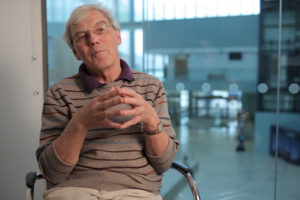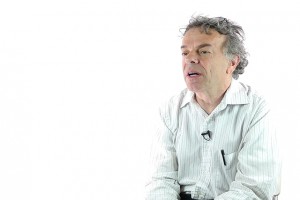Electron Cryomicroscopy
Molecular Biologist Richard Henderson on blobology, 2D crystals, and the resolution revolution
How far have scientists advanced in creating a computerized predictive model of an embryo? Is it possible to replace real experiments with modeling? Senior Research Scientist at Harvard Medical School, Leonid Peshkin, explains how to simulate biology using computers.
Reverse engineering in biology is what applied mathematicians, computer scientists do once they come to biology. To a large extent biology has been a descriptive science. You observe phenomena, you notice correlates in those phenomena, you describe those correlates. So, as embryo develops, at this point, certain things happen. At the later point, you see other things happening. First, there is a beating heart, then embryo hatches, then it starts swimming and feeding. Or cells differentiate, there is a certain shape, then you observe the function. Those are correlates. Of course, what we want in science are causal models. We want an explanation that a certain step happens as a reaction to particular perturbation.
Reverse engineering is a host of methods, tools which allow you to collect such data in a certain way, to analyze it, and to learn what are particular molecular targets, in this case, of drugs, which are important for cell migration. Perhaps, a key concept of language that’s used in biology to explain how things work, causally, is a pathway. A pathway is a cascade of events. Certain molecule is floating around the cell, it is sensed by a receptor, the receptor changes configuration, then with the changed configuration it interacts with another molecule, which, in turn, gets the signal, this molecule diffuses from cell membrane to the nucleus, there it starts another event, for example, it starts transcription, newly created RNA is used to make protein, those protein is now changing the structure of the cell, the cell detaches and migrates. This pathway language is deterministic.
Probability theory and statistics have become particularly important in describing the data that comes from biological experiments, and also became a language of modeling biological events. The result of this sort analysis is twofold. First, the reverse engineering means that you have understood the structure, you have understood what’s under the hood. Second, once you understood and you build a model, you could simulate. Rather than doing biological experiment, which is difficult and costly, you can actually ask “what if” questions.

Molecular Biologist Richard Henderson on blobology, 2D crystals, and the resolution revolution

Radiologist Jeremy M. Wolfe on search strategies in our everyday life, amnesiac search, and false alarms at me...

Molecular Biologist Richard Henderson on the lipid bilayer, mitochondria, and the evolution of organisms